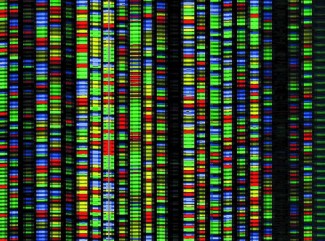A team from the department of neurology of the Pitié-Salpêtrière Hospital-APHP and the Institut du Cerveau, led by Prof Emmanuel FLAMAND-ROZE and Dr Aurélie MENERET, showed the positive effect of coffee in dyskinesia caused by a mutation of ADCY5 gene, in a 11-year-old child. Results are published in Annals of internal medicine.
The gene ADCY5codes for adenylate cyclase type 5. Some mutations in this gene lead to ADCY5-related dyskinesia, a rare hyperkinetic movement disorder with onset in childhood (1). This condition is characterized by pleiotropic paroxysmal dyskinesia with marked fluctuations (2). No effective treatment exists. Among the patients in whom this disorder was diagnosed are a father and daughter with diurnal and nocturnal paroxysmal dyskinesia, who declared they can prevent their dyskinesia episodes by drinking coffee. For example, the father said that he would never go to bed without drinking coffee; otherwise, he would be awakened by dyskinesia.
To report the effect of coffee in an unrelated patient with ADCY5-related dyskinesia and to describe the rationale supporting its use.
The team diagnosed ADCY5-related dyskinesia in an 11-year-old boy. His mother’s pregnancy, his birth, and his early development were unremarkable. At the age of 3 years, he began having diurnal and nocturnal episodes of hyperkinetic involuntary movements of his face and upper limbs, lasting from a few seconds to 10 minutes. Some episodes were triggered by sudden movement, others were exercise induced, and a few were spontaneous. Neurologic examination between episodes was normal except for fleeting choreo-dystonic movements. At age 11, the patient was having approximately 30 episodes per day, and he had difficulty riding a bike and performing some activities of daily living that require fine motor skills. These problems caused substantial disruptions in his life. For example, he had trouble writing in class and could not walk home from school or participate in sports. The co-occurrence of several types of paroxysmal dyskinesia in this patient led us to start genetic testing by looking for mutations in the SLC2A1(solute carrier family 2 member 1) and ADCY5genes. Although genetic analysis found no mutations in SLC2A1, we observed a mosaic heterozygous mutation in ADCY5(c.2088+1G>A) that previously was reported as pathogenic (4).
Doctors prescribed coffee. The boy’s parents were not surprised, because coffee is a commonly used medicine for ailments in children and adults in Madagascar, their country of origin. Treatment started with 1 cup of espresso (approximately 100 mg of caffeine) in the morning, which produced a dramatic response that began in 45 minutes and lasted for 7 hours. With a second cup of espresso in the afternoon and half a cup at bedtime, the boy had nearly complete resolution of all dyskinesia episodes, with no more than 1 or 2 short, nondisruptive episodes during each day. He was able to resume writing in class, walking home from school, and riding a bike. On one occasion, his parents unknowingly bought decaffeinated coffee, resulting in the immediate recurrence of his dyskinesia episodes at their original frequency and severity. After 4 days, the parents realized their mistake and resumed treatment with caffeinated coffee, instantly restoring the improvement seen previously. These events were interpreted as a fortuitous, real-life double-blind experiment.
ADCY5-related dyskinesia is believed to result from gain-of-function mutations in ADCY5. This enzyme is expressed mainly in the striatum, where it is inhibited by dopamine through D2 receptors and activated by adenosine through A2Areceptors. Adenosine receptors are the major target of caffeine (3, 5).Therefore, using caffeine to antagonize A2Areceptors, which inhibits ADCY5 and thus reduces hyperkinetic movement disorder in patients with ADCY5-related dyskinesia, makes sense. Moreover, caffeine is the most commonly consumed drug in the world, which means that a great deal already is known about its effects and safety, even in children. In light of this strong rationale and the team’s experience with their patients, caffeine may be an effective treatment for others with ADCY5-related dyskinesia and should be considered in all patients.
Sources
Caffeine and the Dyskinesia Related to Mutations in the ADCY5 Gene
https://annals.org/aim/fullarticle/2735723/caffeine-dyskinesia-related-…







